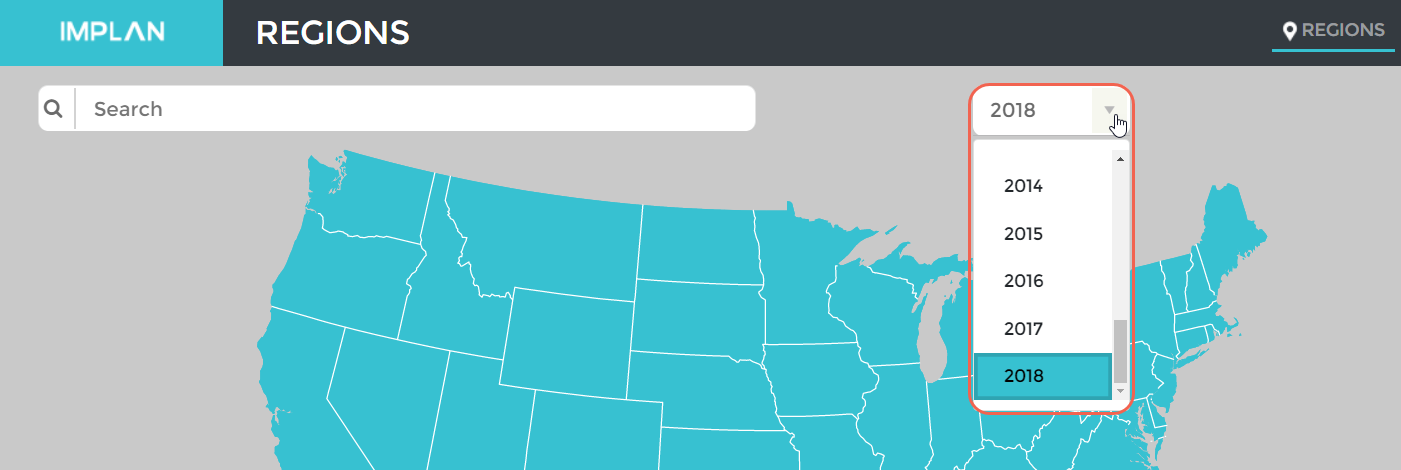INTRODUCTION:
IMPLAN has three core values: community, respect, and stewardship. The goal of being good stewards has taken us beyond examining only the economic impacts associated with changes in production to examining some of the environmental impacts associated with current and projected levels of production. Working with the U.S. Environmental Protection Agency (EPA), IMPLAN has bridged their emissions data to our Industries, thereby tying economic impacts to environmental impacts!
PRODUCT DETAILS:
IMPLAN’s environmental data consist of Industry-specific coefficients of physical emissions or resource use per dollar of Industry Output. These ratios can be applied to the IMPLAN modeling system in order to gain insight into the environmental impacts associated with economic impact scenarios. The data also allows for the comparison of environmental footprints across geographies or over time.
The coefficients are Industry-specific, but the EPA data have somewhat less Industry-specificity than the IMPLAN data, such that some EPA ratios are mapped to more than one IMPLAN Industry. In other words, some IMPLAN Industries have the same coefficients .
The coefficients do not double count in that they do not include the emissions associated with the upstream industries/suppliers. For example, the emissions associated with the car manufacturing Industry do not include emissions associated with the production of car parts or other inputs produced by other Industries; the emissions associated with producing those inputs would be accounted for in the coefficients for those suppliers’ respective Industries.
Any emissions generated directly by households (those not accounted for by household expenditures on electricity and not associated with the production of other items purchased by households) – for example, emissions generated by households’ burning of wood in a wood-fired stove in the home – are not included in the EPA dataset. Therefore, they are not accounted for in the IMPLAN emissions data set. What this means is that all induced emissions in IMPLAN stem from household purchases of energy and of goods and services, all of which require energy to produce and thus create emissions. Any additional emissions generated directly by the household, those not associated with a purchase of energy, goods, or services, will not be accounted for.
The coefficients are national-based. The EPA is working on state-level data, which we plan to incorporate into subsequent iterations of the IMPLAN environmental data. Stay tuned.
DATA SOURCE:
IMPLAN’s environmental ratios are sourced from the U.S. EPA’s Environmentally-Extended Input-Output model (EEIO) data and the methodology put forth by Yang, Ingwersen, Hawkins, Srocka, and Meyer (2017). The data represented falls into 8 broad categories. Within these categories, tags are assigned to represent more specific types of each category.
The categories are:
- Criteria Pollutants
- 267 tags
- Examples: Nitrogen Oxides, Chromium III, Cellosolve Solvent
- Greenhouse Gas Emissions
- 15 tags
- Examples: CO2, N2O, CH4, CF4
- Land Use
- 220 tags
- Examples: Urban Land, Urban Transportation, Rural Transportation, Coal Exploration Licenses
- Mineral Use
- 5 tags
- Examples: Boron, Gypsum, Salt
- Nitrogen and Phosphorus Release to Water
- Pesticide Emissions
- 747 tags
- Examples: Spirodiclofen/air, Norflurazon/water, Fluxapyroxad/groundwater
- Toxic Chemical Releases
- 408 tags
- Examples: 1,2-Dichloropropane, 1,2-Phenylenediamine, 1,3-Butadiene
- Water Use
- 247 tags
- Examples: Alpacas; On-farm surface source, Alpacas; surface water, Aquaculture; groundwater
DATA DELIVERY & SUPPORT:
Until the data are available in the IMPLAN application, the data will be provided in a .csv file containing the coefficients for each IMPLAN Industry. To analyze an environmental impact, one would take the industry Output figures from IMPLAN and multiply them by the coefficients from the environmental data. It’s as easy as that.
Users will have unlimited access to IMPLAN Community Forum at support.implan.com for questions specific to the bridging of the EPA data to IMPLAN Industries. We can also refer users to the EPA for any questions regarding the calculation of their coefficients. IMPLAN economists will gladly respond to questions on IMPLAN’s Community forum within 5 business days at no additional charge. IMPLAN does not support data-application or related questions via email, phone, project consultation, or community forum.
LICENSE AGREEMENT:
Access to the IMPLAN Environmental Data is protected with a custom license agreement. The license agreement will be presented when you are ready to purchase data. Sorry, the lawyers make us do it.
SAMPLE DATA:
Sample Environmental Data
GO GREEN:
To learn more about our environmental data, please contact IMPLAN at 800-507-9426 or sales@implan.com.
RESOURCES:
Ingwersen, W. An Introduction to USEEIO. The Strategic Analysis team for the Advanced Manufacturing Office, Cincinnati, OH, December 06, 2018.
Yang, Y., W.W. Ingwersen, T.R. Hawins, M. Srocka, and D.E. Meyer, 2017. USEEIO: A new and transparent United States environmentally extended input-output model. Journal of Cleaner Production, 158: 308-318.





